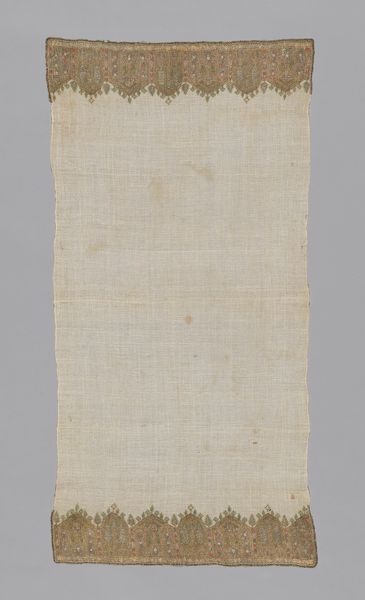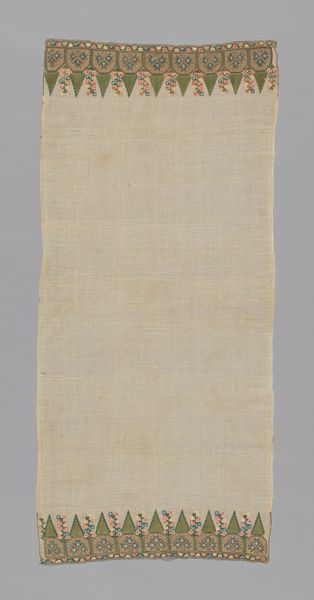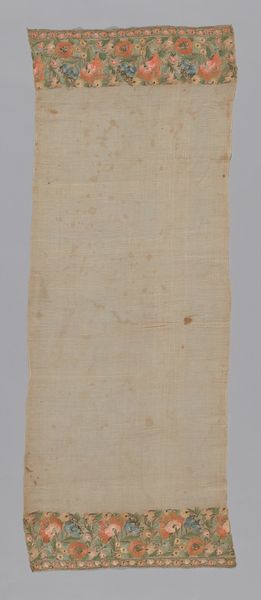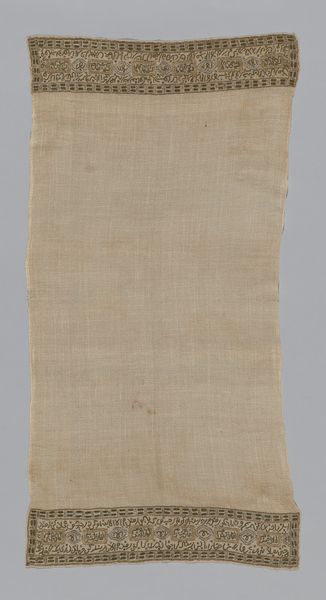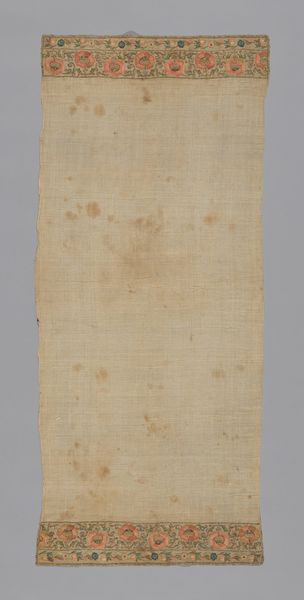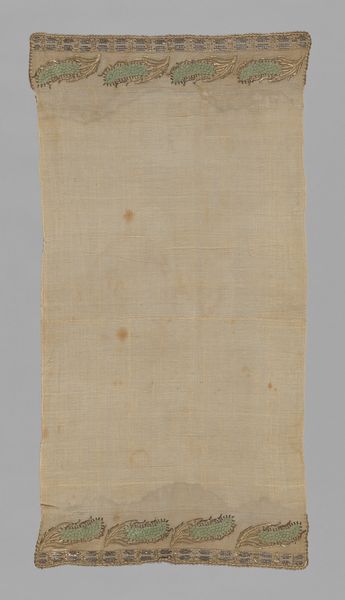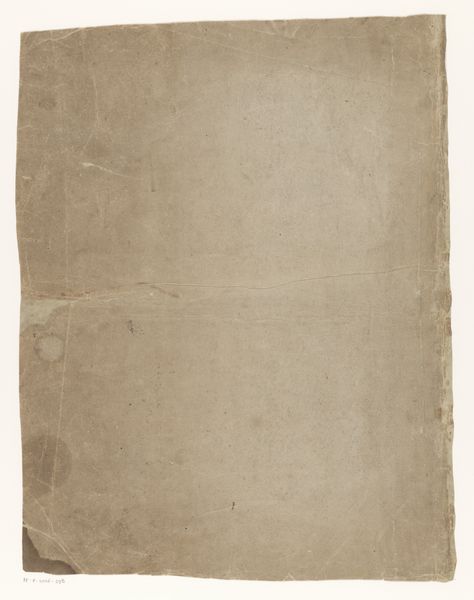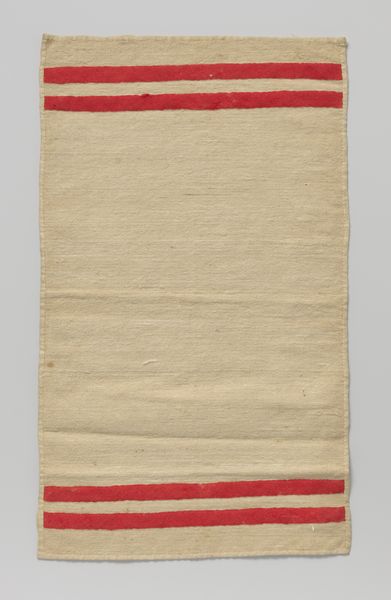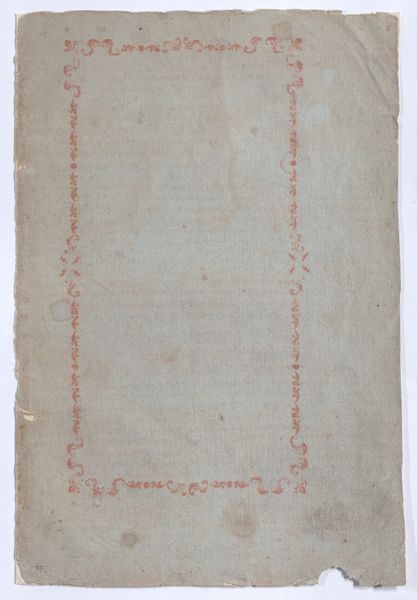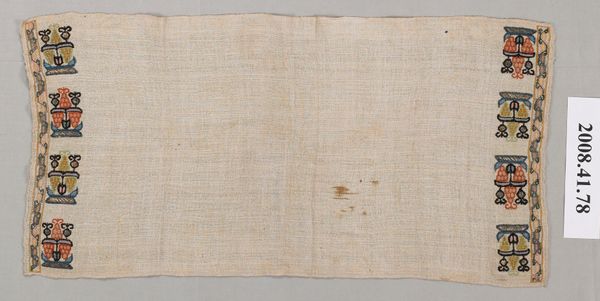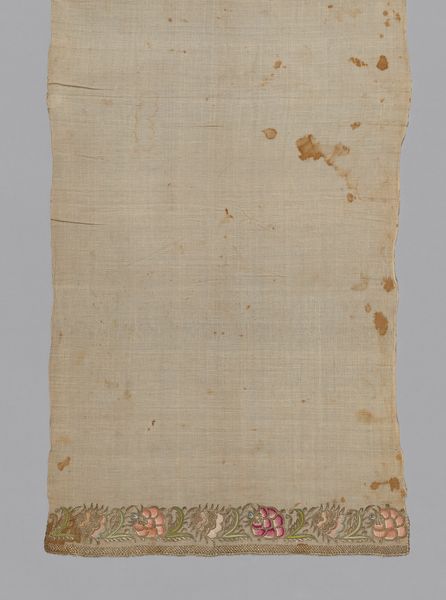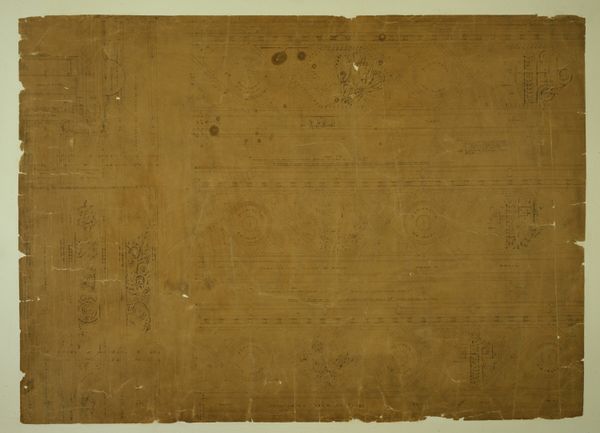
fibre-art, weaving, textile
#
fibre-art
#
weaving
#
textile
Dimensions: 126 × 53 cm (49 5/8 × 20 7/8 in.)
Copyright: Public Domain
Curator: Here we have a linen towel or napkin, created sometime between 1875 and 1900. It is part of the collection here at the Art Institute of Chicago. Editor: It’s beautifully simple. Almost austere. The faded linen has a kind of humble elegance. And those borders – they feel… weighted with meaning, somehow. Curator: Indeed. Textiles such as these played quite specific roles within domestic spaces. Its placement and use would speak to very definite social codes of cleanliness, status, and etiquette. Editor: The embroidered border definitely catches my eye. Are those stylized peacocks perhaps? They feel less decorative than symbolic. The peacock often represents pride, beauty, even immortality in various cultures. Does that imagery fit within the time and region where this towel was created? Curator: The placement of peacock motifs is not especially consistent or rigid in that period, so they could signify a range of themes. A textile like this could signal affluence to visitors, but the use of older symbolic vocabulary can also denote nostalgia, maybe hinting back at more traditional, structured times. Editor: So, it's possibly more than just a towel or napkin then, perhaps even making a silent statement of the owners' aspirations or longing for something lost. I wonder if the wear and slight discoloration contributes to that feeling as well? Curator: The gentle wear hints at a life lived, the routines and rituals associated with daily use. It makes you contemplate not only the maker’s skills but also how domestic objects reflected the broader social and cultural shifts occurring at the time. Mass production began changing lives in really broad ways. Editor: Exactly! This ordinary object now feels far from it, telling stories about how we construct meaning around mundane acts, and how simple objects hold so many complex cultural codes. Curator: Well, it serves as a tangible link to our past, which invites us to reflect on changing attitudes to class and manufacturing. Editor: I agree! And for me, this humble cloth makes me think about symbols' persistence. They outlive the cultures that first imprint them, evolving in meaning as they move through time.
Comments
No comments
Be the first to comment and join the conversation on the ultimate creative platform.
